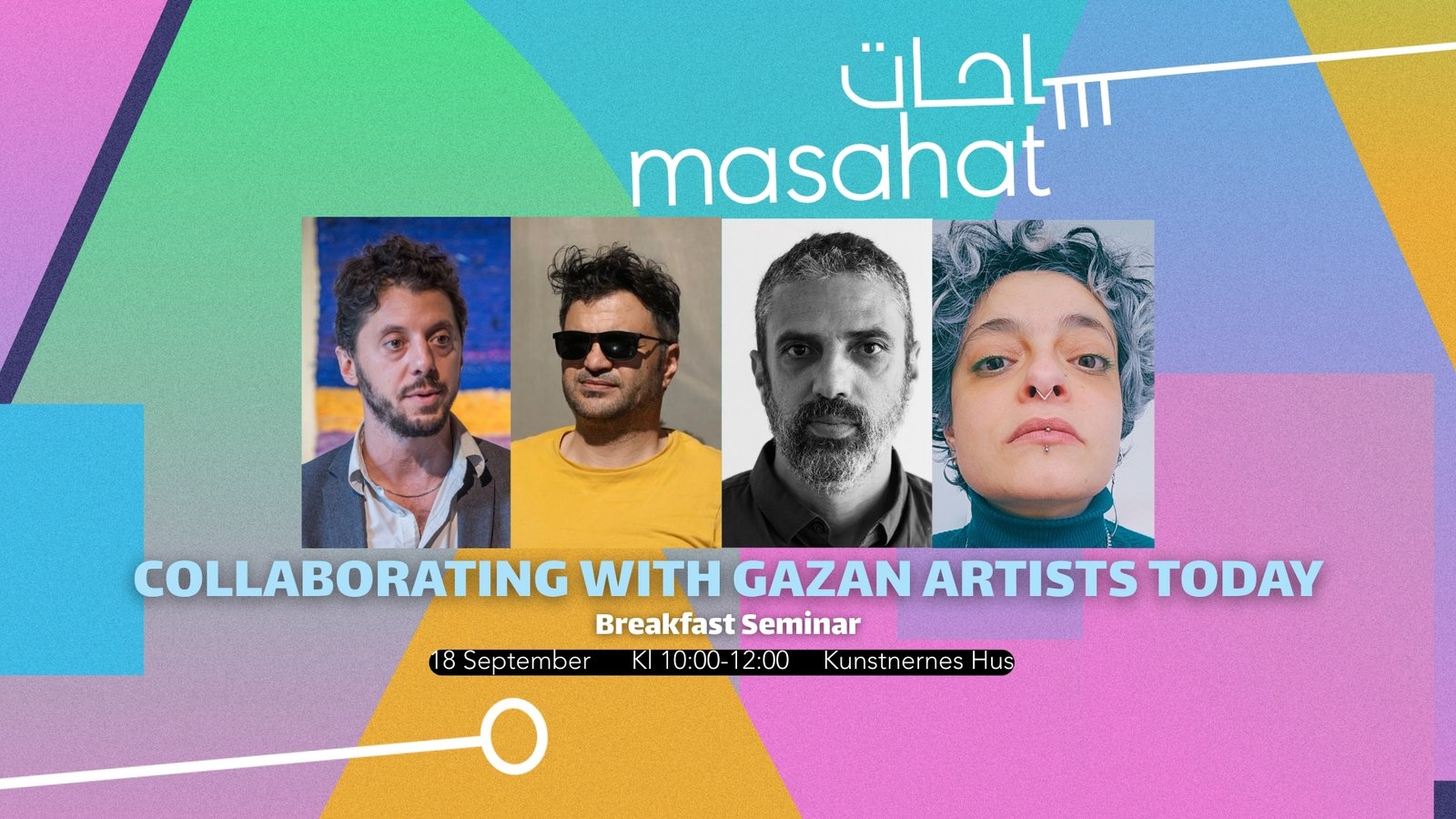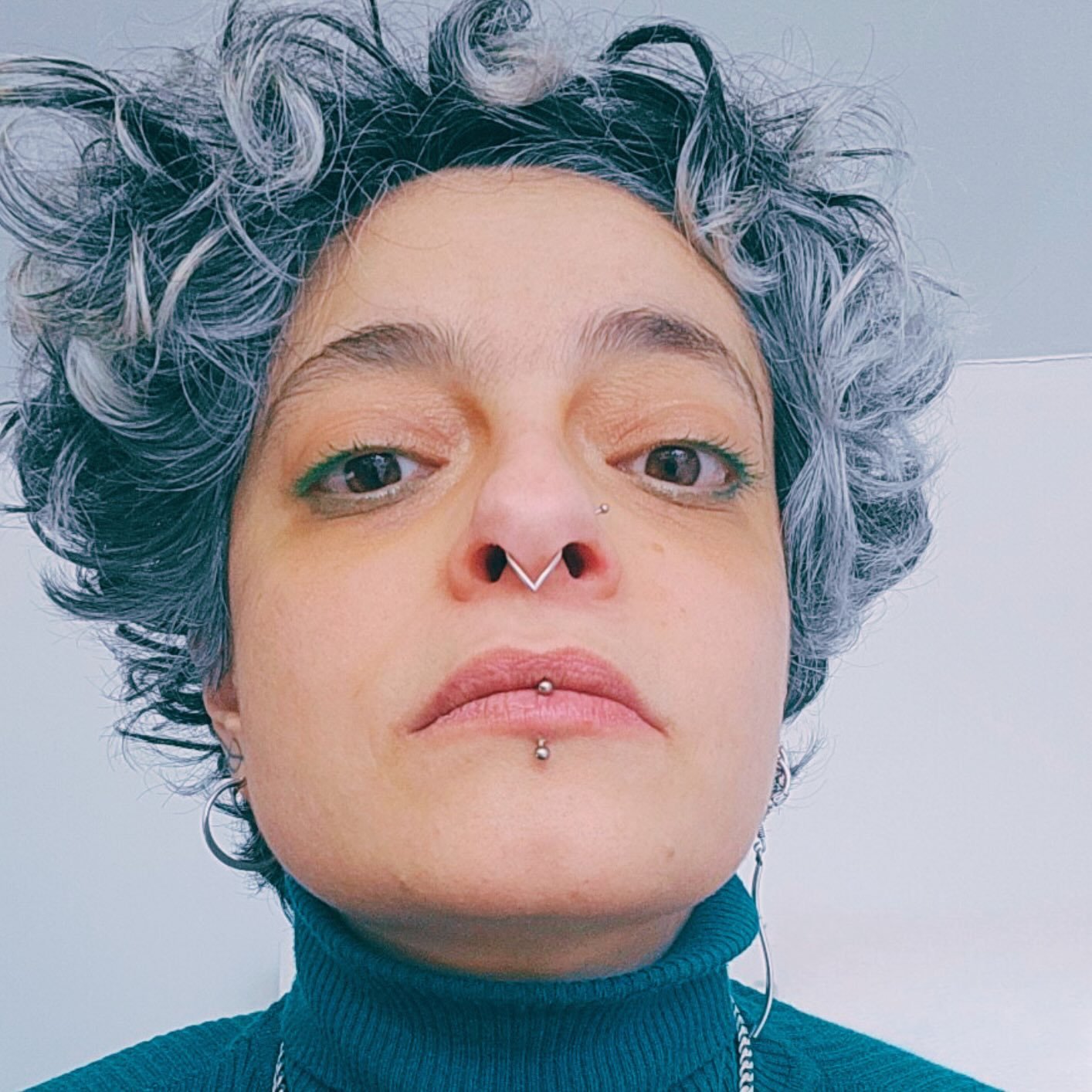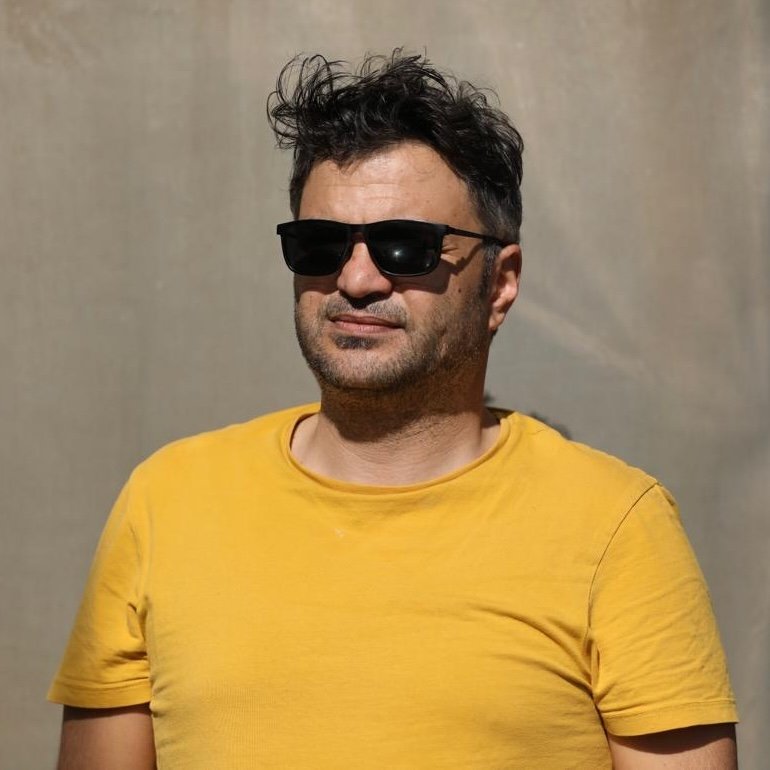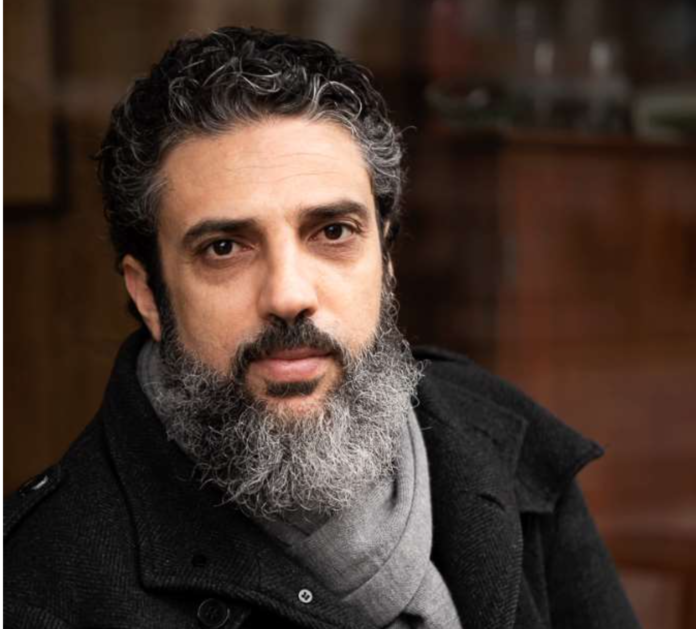Collaborating with Gazan Artists today

Samarbeid med kunstnere i Gaza
Kunstnernes Hus — 18. september, kl. 10:00–12:00
Folkemordet i Gaza har rammet alle sider av palestinsk liv. Ingen i Gaza er trygge, og ingen som har vært vitne til denne forbrytelsen vil noensinne glemme den. I spennet mellom vitner og de som lever under direkte vold, oppstår det presserende spørsmål: Hvordan snakker vi om Gaza? Hvordan viser vi solidaritet med folket der?
I Norge har palestinske kunstnere vært spesielt opptatt av disse spørsmålene—og reflektert over hvordan våre kunstneriske og kulturelle uttrykk ofte ikke strekker til for å formidle Gazas erfaringer av folkemord. Panelet vi har invitert består utelukkende av kunstnere som har omdirigert sin praksis og sine ressurser for å stå sammen med kolleger og venner i Gaza. Målet er tydelig: å sørge for at kunstnere i Gaza bryter gjennom beleiringen og massedrapene, og får snakke med egne stemmer til tross for alle forsøk på å tie dem.
Samtalen stiller spørsmål som: Hva betyr det å samarbeide med kunstnere i Gaza i dag? Hva vil det si å skape kunst under et folkemord? Og hvordan tvinger utryddelsen av palestinere oss til å revurdere våre kunstneriske verktøy, språk og praksiser?
Paneldeltakere
Motaz Al Habbash
Palestinsk kunstner, produsent og kurator bosatt i Norge. Han arbeider primært med video og driver mentorprogrammet Here and There samt plattformen It is hard to be Arab. Hans nåværende filmprosjekt The Donkey of October 7th—i samarbeid med Mustafa Nabieh—handler om eslenes situasjon i Gaza. Blant hans arbeider finner vi installasjonen Stolen Well (Qattan Foundation, Ramallah, 2024) og det sju timer lange liveprogrammet med kunstnere fra Gaza, Gaza (a)live (2016).
Carmel Alabbasi
Palestinsk billedkunstner med en praksis som omfatter video, lyd, tekst, skulptur og installasjon. Med bakgrunn i journalistikk og sosialantropologi, og en MFA fra KHIO (Oslo), undersøker Carmel fravær og forsvinning—og konfronterer koloniale og patriarkalske utslettelser av mennesker, rom og identiteter, mens de utforsker hva som blir igjen etter slike systematiske tap.
Dahaleez Collective
En forskningsbasert kunstnergruppe grunnlagt i Gaza i 2021 av Khaled Jarada, Rahaf Batniji, Salman Nawati, Majdal Nateel, Carmel Al-Abbasi, Mahmoud Abu Wardeh og Mahmoud Al-Shaer. Gruppen startet med prosjektet Geography of Divine Magic ved Beit Al-Ghussein Cultural and Heritage House, som undersøkte palestinernes tidslige og romlige virkelighet under beleiring. Dahaleez utvikler kollektive og analytiske verktøy for å forestille seg frigjøring og gjenoppbygging av Palestina.
Ayman Azraq
Filmskaper, fotograf og kunstner innen mixed media. Kortfilmen The Passport er vist på blant annet Nasjonalmuseet for film i Torino og Cologne International VideoArt Festival. Arbeidene hans inkluderer Oslo Syndrome (Høstutstillingen i Oslo, Dubai International Film Festival, London Palestinian Film Festival), den interaktive installasjonen WALL-1 samt dokumentaren Into My Lungs (Kunstnernes Hus, 2022). Installasjonen The Lost Tapes of a People’s Tribunal 1982 ble vist på Fotogalleriet (2023/24). I 2023 startet han Artist to Artist Project, et digitalt residensprogram som støtter kunstnere i Gaza, og som resulterte i utstillingen For You på Tenthaus og Podium. Han har også stilt ut på Nitja senter for samtidskunst og Rogaland Kunstsenter.
Drew Snyder (Moderator)
Kunsthistoriker og kurator basert i Oslo. Han er senior kurator ved KORO – Kunst i Offentlige Rom, der han blant annet arbeider med store prosjekter knyttet til Regjeringskvartalet og Vikingtidsmuseet. Han er også involvert i forsknings- og diskursive initiativer, som undersøkelser av kunst i offentlig rom i lys av sannhets- og forsoningsprosesser i Norge og Sápmi, samt det Oslo-baserte residensprogrammet Artist to Artist, som fremmer dialog mellom kunstnere i Gaza og Norge. Snyder har en doktorgrad i kunsthistorie, teori og kritikk fra University of California, San Diego.
Photo credit: Svein Erik Tøien
Kunstnernes Hus — September 18, 10:00–12:00
The genocide in Gaza has devastated every aspect of Palestinian life. No one in Gaza is safe, and no one who has witnessed this crime will ever forget it. In the gap between those who witness and those who endure the violence directly, urgent questions arise: How do we speak about Gaza? How do we act in solidarity with its people?
In Norway, Palestinian artists have been especially attentive to these questions—reflecting on how our artistic and cultural expressions often fall short of conveying the Gazan experience of genocide. The panel we have invited consists entirely of artists who have redirected their practice and resources to stand with colleagues and friends in Gaza. Their goal is clear: to ensure that Gazan artists break through the siege and mass killing, and speak in their own voices despite ongoing attempts to silence them.
This conversation asks: What does it mean to collaborate with artists in Gaza today? What does it mean to make art during a genocide? And how does the extermination of Palestinians compel us to rethink our artistic tools, languages, and practices?
Panelists
Motaz Al Habbash
A Palestinian artist, producer, and curator residing in Norway. He primarily works with video and runs the mentoring program Here and There and the art and culture platform It is hard to be Arab. His current film project The Donkey of October 7th—in collaboration with Mustafa Nabieh—focuses on the situation of donkeys in Gaza. His work includes the installation Stolen Well (Qattan Foundation, Ramallah, 2024) and the seven-hour live program with Gazan artists Gaza (a)live (2016).
Carmel Alabbasi
A Palestinian visual artist whose practice spans video, sound, writing, sculpture, and installation. With a background in journalism and social anthropology, and an MFA from KHIO (Oslo), Carmel’s work explores absence and disappearance, confronting colonial and patriarchal erasures of people, spaces, and identities.
Dahaleez Collective
A research art collective founded in Gaza in 2021 by artists and researchers Khaled Jarada, Rahaf Batniji, Salman Nawati, Majdal Nateel, Carmel Al-Abbasi, Mahmoud Abu Wardeh, and Mahmoud Al-Shaer. Originating with the project Geography of Divine Magic at Beit Al-Ghussein Cultural and Heritage House, the collective examines Palestinians’ temporal and spatial realities under siege. Dahaleez develops collaborative and analytical tools to envision liberation and reconstruction of Palestine.
Ayman Azraq
A filmmaker, photographer, and mixed-media artist. His short film The Passport has screened at the National Museum of Cinema (Turin), Cologne International VideoArt Festival, and elsewhere. His work includes Oslo Syndrome (Autumn Exhibition, Oslo; Dubai International Film Festival; London Palestinian Film Festival), the collaborative installation WALL-1, and the documentary Into My Lungs (Kunstnernes Hus, 2022). His mixed-media installation The Lost Tapes of a People’s Tribunal 1982 was exhibited at Fotogalleriet (2023/24). In 2023, he launched the Artist to Artist Project, a digital residency supporting Gazan artists, culminating in the exhibition For You at Tenthaus and Podium. He has also exhibited at Nitja Center for Contemporary Art and Rogaland Kunstsenter.
Drew Snyder (Moderator)
An art historian and curator based in Oslo. He is Senior Curator at Public Art Norway – KORO, where his work includes major public art projects at the Government Quarter and Museum of the Viking Age. He is also engaged in discursive initiatives such as investigations of public art in the context of Truth and Reconciliation in Norway and Sápmi, and the Oslo-based Artist to Artist residency program facilitating dialogue with Gazan artists. Snyder holds a PhD in art history, theory, and criticism from the University of California, San Diego.
Photo credit: Svein Erik Tøien
Dato og tid
Start: September 18, 2025 — 10:00 am
End: September 18, 2025 — 12:00 pm
Start: September 18, 2025 — 10:00 am
End: September 18, 2025 — 12:00 pm




